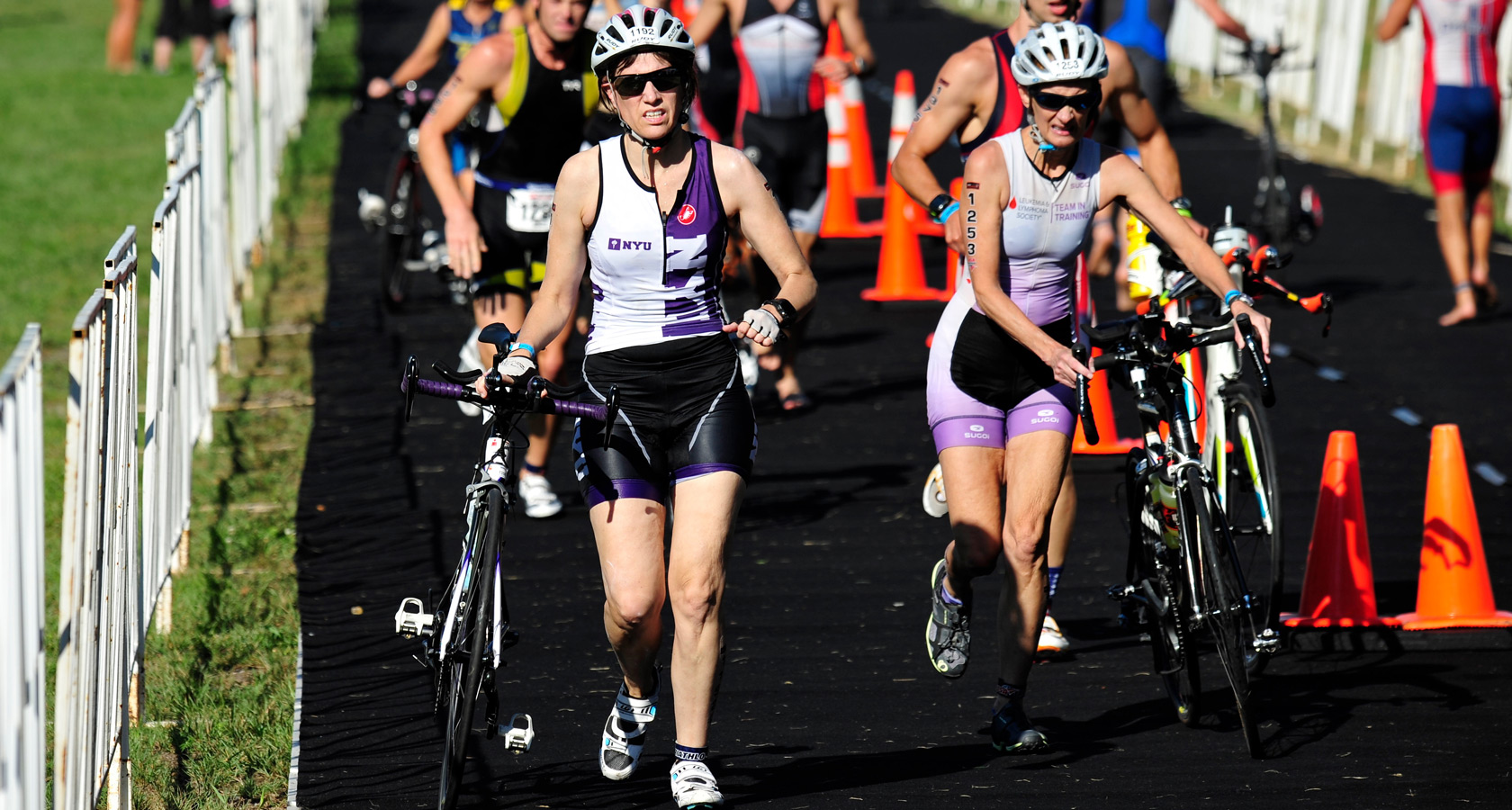Photo Credit - Rich Cruse | crusephoto.com
Maximize Your Run Off the Bike
In the professional and amateur ranks of triathlon, from ITU sprint races to full IRONMAN events, the race is almost always won on the run. The shorter the event, the less opportunity to make up time lost during the swim and bike. For pros and age-groupers alike, it is important to run efficiently coming out of T2. So how do you do that? I have summarized below why I train my athletes in the importance of the transition run and provided you with some insight on how I train them to maximize their run split.
Practice Running Off the Bike
If you never run off the bike in training, you can never expect to perform to your full potential during the run in a race situation. Every triathlete I coach completes transition runs after most long rides and some midweek bike sessions as well. I may delay starting these runs with beginners for a month or more, but eventually everyone is completing them.
Neuromuscular Development
The idea behind the short transition run (from 5-15 minutes) is not additional fitness gains. The effort is simply too short for any meaningful improvements to your body’s energy systems. However, at the heart of these shorter runs is providing neuromuscular development of the athlete’s gait, which makes running off the bike more efficient and more effective. Achieving your run legs as fast as possible maximizes your ability to run well. It will take time to train the body to switch from utilizing the legs for biking then immediately for running. While many of the same muscle groups are used for both sports, the manner in which they are recruited differs, and the body can adapt to that change over time with proper transition run training.
Start Short and Progress the Duration
Since the primary goal is to train the body to make that transition from biking to running more efficient, we need to start with shorter runs off the bike and progressively make them longer. Once the transition run gets beyond the 20-minute point, we can start to expect gains in fitness as well. I will typically start individuals off at 5 minutes and progress them up to runs of over 12 miles, depending upon the athlete’s chosen event and their ability. While most of the transition runs I prescribe are in the 10- to 20-minute range, the longer, multi-mile runs off the back end of a long bike are strategically placed in an athlete’s training schedule to maximize the physiological adaptations they provide.
The Importance of Pacing
The transition run is also an effective training tool to teach athletes the art of pacing. Running too fast out of T2 is one of the most common mistakes I see athletes make at races (just behind going too hard for the first quarter, half or more of the bike, but that’s another topic entirely). The transition run allows the athletes to pace their effort to keep themselves running within their limits. However, many individuals will miss the point of their transition run and show everyone how fast they can run off the bike. Sure, for 5 minutes you might be able run like Usain Bolt, but is that sustainable for a 5k, 10k, half marathon or more? Inevitably, this lack of discipline leads to the same thing happening at the race — go out too fast, blowing up, walking, shuffling, walking, shuffling. Have you been there? We all have at some point. What is necessary is to be disciplined enough to know the purpose of each transition run and execute it as prescribed.
I mentioned pacing being an art, and it’s painted with the use of perceived exertion. Many athletes utilize heart rate monitors and even running power meters for assistance in gauging their effort, but perceived exertion is critical to a successful run off the bike. This sixth sense can be developed over the course of a training season although it takes years to master if ever. After your first few steps onto the run course, continually assess your energy levels and ask yourself this important question, “Can I sustain this effort to the finish line?” Heart rate may not be telling the whole story since there are so many variables that can have an effect on it. Perceived exertion, on the other hand, is your internal, mental barometer on how your body is reacting to your effort at any given moment, and practice will develop it to your advantage. Continue to use heart rate and the experience of knowing what values typically correspond to what efforts, and you will have an additional metric that can be cross-referenced with perceived exertion to get a better overall picture of how you are expending your energy.
To maximize your run off the bike you need to practice the art of pacing. And to practice that art, you need to practice the transition run. For this triathlon season, insert purposeful transition runs that aim to mimic the demands that your key event(s) will place on you come race day. Begin with short efforts off the bike where the goal is to simply focus on how you feel, not how fast you are running. Treat each of these runs as though you are going the full race distance and you will discover through experience just how fast you can really run and not implode, ruining your race. A little bit of discipline will go a long way this season and help transform the way you approach the run out of T2.

